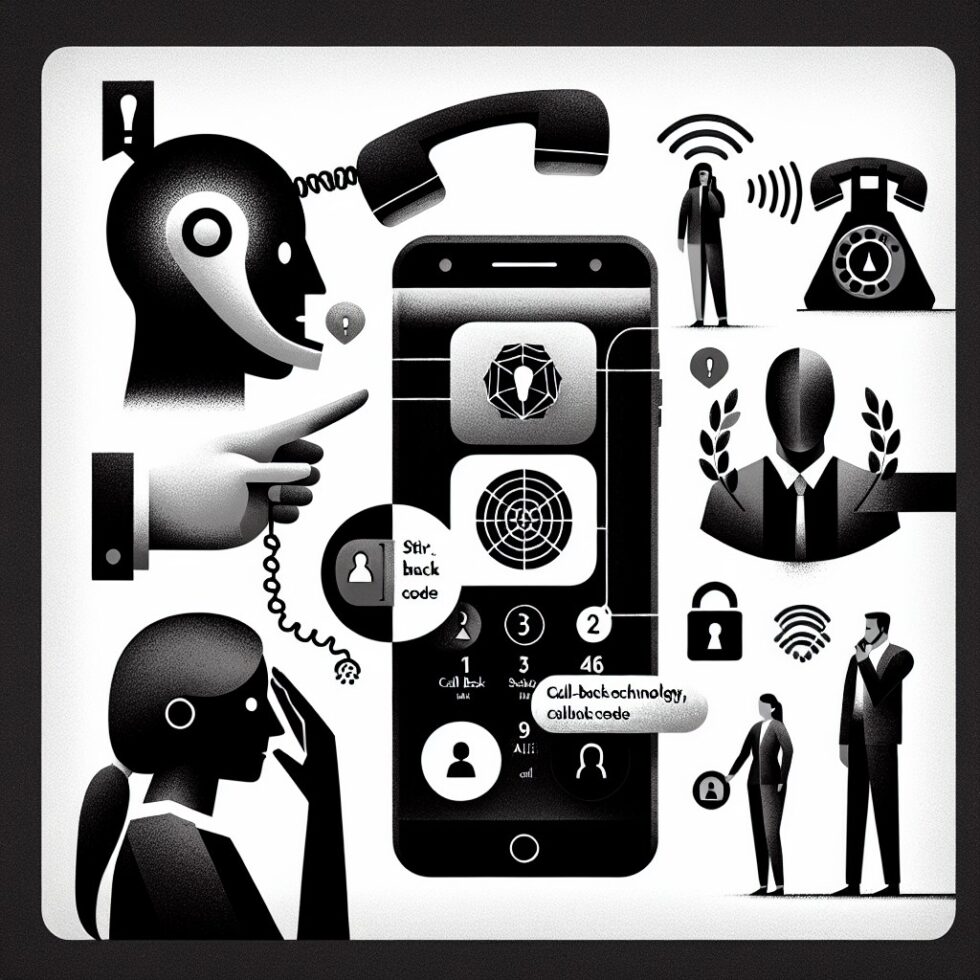
Phone calls used to be simple: the screen showed a number, you decided to answer, and off you went. Today, calls can be cloned, numbers can be faked, and the helpful voice on the other end might be an AI trained on a few seconds of your speech. Organizations struggle to reach customers who stop picking up. Families worry about “grandparent scams.” And teams chase urgent approvals that should never have been approved.
This guide explains how to rebuild practical trust in calls. We’ll cover how STIR/SHAKEN caller authentication actually works, what it can and cannot prove, and a set of protocols—call-back codes, dual‑channel checks, and smart call screening—that you can adopt at home and at work. The goal is simple: make a phone call reliable again, without adding confusing tools or unreasonable friction.
The Problem, Plainly Stated
Two shifts broke phone trust. First, spoofed caller ID let criminals display numbers that look familiar or official. Second, AI voice cloning made it easy to mimic someone’s speaking style. You cannot fix this with caller intuition alone. You need a system.
The good news: the phone ecosystem now includes authentication standards, carrier filters, and on‑device features that, together with a few human protocols, make scams much harder to pull off. Think of this as Zero Trust for voice: never rely on a single signal, and always verify sensitive requests through an independent channel.
How Caller Authentication Works—and Where It Stops
STIR/SHAKEN in human terms
STIR/SHAKEN is a framework carriers use to validate the caller ID on IP-based calls. When a call is placed, the originating carrier attaches a signed token that says, “I know this customer and I vouch for the number they’re using.” The token rides along with the call. The receiving carrier checks the signature. If it’s valid, your phone may show a badge like “Verified Caller.”
Attestation levels matter
Behind the scenes, carriers classify the call with one of three attestation levels that indicate how confident they are about the caller’s right to use the number:
- A (Full): The carrier knows the customer and the phone number is theirs.
- B (Partial): The carrier knows the customer, but the number cannot be fully verified.
- C (Gateway): The carrier is just passing the call along with minimal knowledge.
You won’t always see A/B/C on your screen, but the “verified” indicator typically maps to a strong attestation. Even then, note the limit: STIR/SHAKEN verifies number ownership, not the person or the content of the call. A verified call can still be a fraud attempt if a real number is misused by a compromised account or a coerced caller.
What “verified” does not mean
- It does not mean the caller is who they claim to be as a person.
- It does not mean the message is legitimate.
- It does not protect calls outside participating networks or legacy systems.
So treat “verified” as a helpful signal, not a decision. When stakes are high, move to a second, independent check.
The Everyday Playbook for Individuals
1) Use a call-back code for anything that touches money or secrets
Agree on a call-back code with close contacts. It’s a short phrase, changed periodically, that must appear during sensitive calls. The steps are simple:
- When someone asks for money, credentials, or urgent action, ask them for today’s code.
- If they don’t know it, hang up, and initiate a call back using a saved, trusted number.
- Rotate the code monthly, and never send it by email or text where it can be stolen.
This tactic counters both spoofed numbers and cloned voices, because the attacker can’t know the rotating phrase. It’s easy to remember and adds seconds, not minutes.
2) Build a “trusted numbers” list that you own
Keep a clean set of contact cards for banks, doctors, schools, and workplaces. Get these numbers from official websites or printed documents, not from search results or emails. When an unfamiliar number calls with a claim to be one of those orgs, don’t argue—call back using the contact in your phone. Yes, it’s extra effort. It also prevents most scams.
3) Let machines filter first, but you make the final call
Enable silence for unknown callers and turn on live transcripts where available. Modern phones and carrier apps can screen calls and show a real‑time transcript. This reduces distractions and gives you space to decide. If the transcript shows a demand for urgency, payments, or one‑time codes, treat it as a red flag. Use your trusted number to follow up.
4) Never share one‑time codes on a call—ever
One‑time passwords (OTPs) are for typed login, not for spoken confirmation. If a caller asks for a code you received by SMS or authenticator app, hang up and report it. Legitimate support teams will not ask for your OTP.
5) Keep voicemail boring
Use a neutral voicemail greeting. Don’t say your full name, workplace, travel dates, or family details. Short greetings reduce the material available for voice cloning and social engineering.
The Business Playbook for Trustworthy Outbound Calls
If your organization needs to reach customers by phone—delivery confirmations, account support, fraud alerts—assume that many won’t pick up and some will be wary if they do. Your job is to provide multiple, consistent, low‑friction proofs that it’s really you.
Step 1: Make your numbers verifiable
- Use registered numbers: Work with your carrier or CPaaS to ensure your outbound numbers are properly registered and eligible for caller authentication.
- Keep a public contact page: Maintain an up‑to‑date list of official numbers on your website. Customers should be able to confirm a calling number quickly.
- Stay consistent: Minimize the number of different outbound lines you use. Frequent number changes get labeled as spam.
Step 2: Announce the call in another channel
Before high‑risk calls, send a short notice via your app, email, or SMS from an established thread: “We’ll call you from 555-0100 in the next 5 minutes. You don’t need to share any codes.” This primes the customer and provides a reference number for the conversation.
Step 3: Use call‑back codes and dual control
Train agents to offer a pre‑agreed call‑back code that the customer can verify in their account profile or app. For sensitive changes (payment method updates, address changes, password resets), require dual‑channel approval: a push notification or in‑app confirm, not a verbal “yes.” This deters vishing and cloned‑voice attacks.
Step 4: Publish a “no‑ask” pledge
Put a clear statement on your website and IVR: “We never ask for your password, one‑time codes, or full card numbers on a call.” Repeat it in agent scripts. Customers internalize these guardrails quickly.
Step 5: Monitor and tune your answer rate
Track answer rates by campaign, number, time of day, and region. Audit recordings for clarity and compliance. If a number starts getting spam‑flagged, pause it and investigate. High answer rates correlate with consistent IDs, predictable scheduling, and plain language intros: “Hi, this is Jamie from Northside Clinic, calling about your 3 p.m. appointment. You can call us back at 555‑0100.”
AI Tools That Help—And Their Limits
Call screening and spam signals
Carriers run machine learning models that score calls based on patterns: call volume, short call duration, reports from users, and changes in origination. Phones can use these signals to show warnings like “Spam Risk.” Enable these features; they’re usually free and get better as more people use them. Still, false positives happen—thus the need for redundant verification paths.
Detecting synthetic speech
Research groups run challenges to detect synthetic and spoofed speech by analyzing subtle cues—prosody, spectral artifacts, and breath patterns. These systems improve, but attackers improve too. Don’t rely on your ear to spot a clone. Instead, structure your process so that even a perfect clone fails: they won’t know your call‑back code, can’t confirm in your app, and can’t trigger a one‑click payment without a second channel.
Real‑time transcripts for decision space
Live captions add a crucial few seconds to disengage from a pressure tactic. If you see phrases like “right now,” “urgent,” “wire money,” or “read me the code,” take control: say you’ll call back, then end the call.
Practical Protocols You Can Deploy This Week
For households
- Agree on one simple rule: no one moves money based on a call. You always hang up and call back using a saved number.
- Set a “callback phrase” for family emergencies. Rotate it monthly and don’t use it anywhere else.
- Use phone features: silence unknown callers; enable live transcript or call screening; keep a short, neutral voicemail greeting.
For small businesses
- Publish official numbers on your website and receipts; keep them stable.
- Script your intros: state who you are and the callback number in the first 10 seconds.
- Add a verification step: for any account change or payment, require an in‑app confirmation or a call‑back code shown in the customer’s account.
- Register numbers with your carrier for caller authentication and spam mitigation. Use compliant dialing practices to avoid flags.
For larger teams
- Define a “no‑ask” policy: agents never request passwords, full card numbers, or OTPs. Audit adherence.
- Implement dual control for high‑risk changes; approvals must come from a second channel tied to the account.
- Roll out agent training on social engineering patterns, especially AI‑assisted vishing. Use real examples from your sector.
- Measure outcomes: answer rates, verification completion times, and fraud reports. Adjust scripts and timing based on data.
Designing Safer Call Flows
Map the risky moments
Most call fraud concentrates around a few moments: payment requests, credential resets, shipping address changes, and updates to contact methods (phone/email). Build extra checks only at these points. Routine scheduling or general inquiries can stay lightweight.
Make safe behavior the fastest path
If it’s faster to approve in‑app than to keep arguing on the phone, people will use the app. If it’s quicker to call back using a saved contact than to hunt for a website number, they’ll do that. Speed and clarity beat lectures about security.
Use plain language
Replace jargon with short, direct statements:
- “We’ll never ask for one‑time codes on a call.”
- “To confirm it’s really us, open our app and tap ‘Verify call.’”
- “If you’re not sure, hang up and call 555‑0100.”
Consistency builds trust. Customers who hear the same phrases across IVR, agents, emails, and your website learn the rules quickly.
Global Considerations and Edge Cases
Regulatory patchwork
STIR/SHAKEN is strongest across IP-based networks and is widely implemented in North America. Other regions are deploying similar frameworks or carrier-level analytics. If you operate globally, expect uneven support. Maintain regional number lists and adapt scripts to local norms.
Emergency and healthcare calls
Emergencies remove time for elaborate checks. Pre‑registration helps: ask patients to save your clinic number; add it to appointment reminders. For hospitals and schools, publish a short “urgent contact” guide on your website so families know the right callback line during critical situations.
Accessibility
Screening and transcripts are essential for many people with hearing loss. Ensure your processes respect TTY/relay services and don’t penalize legitimate accessibility tools. In training, cover how to verify identities without bias and without relying on voice alone.
Thirty Days to Stronger Call Trust: A Mini Roadmap
Week 1: Baseline and quick wins
- Enable carrier spam protection and call screening on all team devices.
- Publish or update your official phone number list and “no‑ask” pledge.
- Write a 2‑sentence intro script that includes callback info.
Week 2: Verification channels
- Add a call‑back code in customer accounts or apps.
- Turn on in‑app confirmations for high‑risk actions.
- Set up proactive notifications: “We’re about to call you from 555‑0100.”
Week 3: Number hygiene
- Register outbound numbers for caller authentication with your carrier.
- Consolidate to a small, stable set of numbers per use case.
- Review dialer practices to avoid patterns that trigger spam labels.
Week 4: Train and measure
- Run a 45‑minute training on social engineering and safe call flows.
- Start tracking answer rates and verification completion times.
- Collect first fraud reports and adjust scripts based on real calls.
Common Pitfalls to Avoid
- Relying on a single signal: “Verified” on screen or a familiar voice is not enough for sensitive actions.
- Overcomplicating verification: If your process takes too long, people will bypass it. Keep it simple and quick.
- Ignoring number reputation: Rotating numbers, high short‑call rates, and late‑night dialing get you labeled as spam.
- Sharing OTPs on calls: Train your team to never ask. Teach customers to never share.
- Forgetting accessibility: Don’t block relay services or penalize users who rely on captions.
What’s Coming Next
Expect richer caller authentication to reach your screen over time. Carriers are working on enhanced caller displays that show a verified brand name and logo, plus a purpose for the call. You’ll also see better call‑reason previews in transcripts and app notifications. Meanwhile, research on synthetic speech detection will keep improving—but the safest defense remains channel separation and shared secrets that AI can’t guess.
Sample Scripts You Can Copy
Agent intro for outbound support
“Hi [Name], this is [Agent] with [Company]. You can call us back at [Official Number]. We will not ask for passwords or one‑time codes. I’m calling about [specific purpose]. To confirm it’s us, please check the code in your account under ‘Verify Call.’”
Customer instruction for high‑risk actions
“For security, we’ll send a confirmation to your app. Please approve it there. We cannot process this change based on a phone response.”
Household rule
“We don’t move money from phone requests. We hang up and call the saved number.”
Measuring Success
You’ll know your system works when:
- Answer rates for legitimate calls rise and stabilize.
- Time‑to‑verify for sensitive requests drops under two minutes.
- Fraud attempts get reported earlier, often during the first call.
- Agents follow “no‑ask” policies without exceptions.
Review these metrics monthly. Keep what works, remove what doesn’t, and update scripts as scams evolve.
Frequently Asked Questions
Is a verified caller ID bulletproof?
No. It’s valuable but incomplete. It verifies number ownership, not the human or the message. Use an independent check for anything sensitive.
Can I train myself to hear AI voices?
Not reliably. Clones can sound very real. Focus on process: callback codes, trusted numbers, and dual‑channel confirmations.
What if I block too much and miss an important call?
That’s why you publish official numbers and offer alternative channels. Encourage callers to leave a short, specific voicemail and to send a confirm via your app or website.
Key Takeaways for Teams Rolling This Out
People remember rules that are short and repeated
Make your safeguards memorable: “We never ask for codes.” “Call us back at 555‑0100.” “Approve in app.” Repetition creates habits.
Minimize friction where it matters least
Reserve extra checks for money and account changes. Keep routine calls friendly and fast. The goal is precision, not blanket skepticism.
Treat your phone strategy like any other security program
Assign an owner, set metrics, run small experiments, and adapt. Call trust is not a one‑time project; it’s an operating habit.
Summary:
- Caller ID alone isn’t reliable; use STIR/SHAKEN as one signal, not the decision.
- Adopt call‑back codes, trusted numbers, and dual‑channel verifications for sensitive actions.
- Enable carrier and device call screening and use live transcripts to reduce pressure tactics.
- Publish a clear “no‑ask” pledge and stable official numbers customers can verify.
- Train agents and households on simple, repeatable scripts; measure answer rates and verification times.
- Balance security with accessibility and speed; make the safe path the fastest path.





